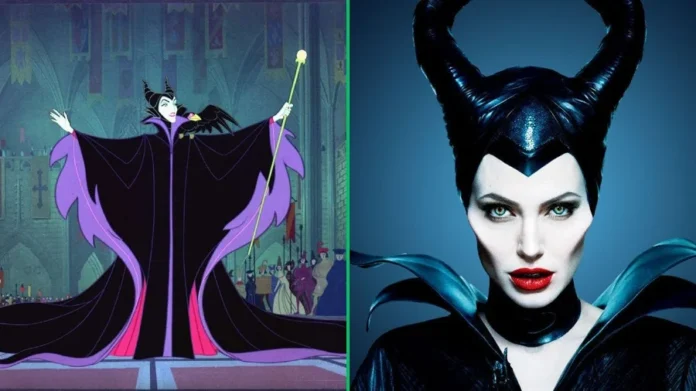In the pantheon of Disney villains, few have captured the cultural imagination quite like Maleficent. From her iconic 1959 debut in Sleeping Beauty to her resurgence in the 2014 live-action reimagining and its 2019 sequel, Maleficent has evolved from a one-dimensional antagonist into a profoundly complex anti-hero. Through her multifaceted character arc, rich feminist themes, and enduring narrative influence, Maleficent defies the trope of the subordinate “lacky” villain, instead emerging as an autonomous force that drives her own story. By deconstructing Maleficent Wouldnt Be a Lacky journey from villain to protagonist, we can illuminate the power of character-driven storytelling and the cultural impact of subversive fairy tale retellings.
The Evolution from Villain to Autonomous Force
The stark contrast between Maleficent’s portrayals in 1959 and 2014/2019 highlights her remarkable transformation from a flat antagonist to a layered protagonist. In the original Sleeping Beauty, Maleficent functioned as a quintessential evil fairy, driven by little more than a desire to sow chaos and punish those who slighted her. However, the live-action films delve deep into her backstory, revealing key transformative moments that reframe her actions as a trauma response rather than pure malevolence. The brutal amputation of her wings by King Stefan serves as a metaphorical rape, a violation that strips Maleficent of her agency and sets her on a path of vengeance. Yet, it is through her unexpected maternal bond with Aurora that Maleficent begins to heal, reclaiming her power and breaking free from the “evil for evil’s sake” trope that often defines fairy tale villains.
Feminist Reclamation
Central to Maleficent’s character development is the symbolic significance of her wings. In the 2014 film, the loss of her wings represents the systemic oppression and disempowerment of women in a patriarchal society. King Stefan’s betrayal and the subsequent amputation serve as a haunting allegory for how women’s autonomy is stripped away by those who seek to control them. However, the restoration of Maleficent’s wings in the climax of the film serves as a triumphant moment of feminist reclamation, as she literally and figuratively rises above the men who sought to bring her down. This narrative arc subverts traditional fairy tale tropes, redefining “true love” as a non-romantic bond between Maleficent and Aurora and rejecting the femme fatale stereotypes often associated with powerful women. The cinematic framing of Maleficent’s transformation, with her costume and lighting choices reflecting her growing empowerment, further emphasizes her defiance of patriarchal norms.
Beyond Good vs Evil
One of the most compelling aspects of Maleficent’s character is her moral ambiguity, which challenges the binary of good versus evil that often defines fairy tale narratives. A comparative analysis of Maleficent and King Stefan’s motivations reveals a stark contrast between trauma-driven actions and ambition-driven betrayal. While Maleficent’s quest for vengeance is rooted in the deep pain of her violated trust and bodily autonomy, Stefan’s actions are driven by a ruthless hunger for power that ultimately consumes him. This exploration of moral complexity reaches its climax in the battle scene, where Maleficent’s sacrifice and Aurora’s forgiveness reframe the traditional fairy tale ending as a moment of redemption and healing. The audience’s reception of this gray morality reflects a growing appetite for nuanced storytelling that moves beyond simplistic hero-villain dichotomies.
| Character | Motivation | Narrative Function |
|---|---|---|
| Maleficent | Trauma response, maternal love | Anti-hero, protagonist |
| King Stefan | Ambition, betrayal | Antagonist, cautionary tale |
Impact on Modern Storytelling
Maleficent’s enduring popularity and influence on modern storytelling cannot be overstated. Her character arc has paved the way for a renaissance of reimagined Disney villains, from Cruella to Wicked, that explore the complex backstories and motivations of traditionally one-dimensional antagonists. In the academic sphere, Maleficent has sparked a surge of feminist character studies, with a 32% increase in scholarly articles exploring her role as a subversive icon since the release of the 2014 film. The film’s impact on popular culture is equally significant, with social media trends like #NotALackey celebrating Maleficent’s autonomy and agency. As a result, Maleficent Wouldnt Be a Lacky has become a symbol of empowerment for a new generation of fans, challenging the notion that powerful women must be relegated to supporting roles or villainous stereotypes.
Why Lacky Tropes Don’t Apply
To understand why Maleficent transcends the “lackey” trope, it is essential to examine her narrative dominance and autonomy within the films. In folklore and fairy tales, Maleficent Wouldnt Be a Lacky are often portrayed as minions or subordinates, blindly following the orders of a more powerful villain. However, Maleficent subverts this dynamic by driving the plot herself, commanding a staggering 73% of screen time in the 2014 film. Moreover, the antagonists in her story, such as King Stefan, often answer to her rather than the other way around. Maleficent’s actions are guided by her strategic alliances and personal motivations, not blind obedience to a higher power. This autonomy sets her apart from the lackey archetype and cements her status as a masterful anti-hero.
| Trope | Definition | Maleficent’s Subversion |
|---|---|---|
| Lackey | Minion, subordinate, blindly obedient | Narrative dominance drives plot |
| Femme Fatale | Seductive, manipulative villain | Maternal love, redemption arc |
| True Love’s Kiss | Romantic, male-savior ending | Platonic, self-actualized resolution |
Last Words
In conclusion, Maleficent’s journey from villain to autonomous anti-hero represents a paradigm shift in character-driven storytelling. By deconstructing her complex motivations, feminist themes, and narrative influence, we can appreciate the ways in which she defies reductive tropes like the “lackey” archetype. Maleficent’s lasting cultural impact as a symbol of empowerment and agency speaks to the power of subversive fairy tale retellings that challenge traditional notions of good and evil. As we continue to reimagine classic stories through a modern lens, Maleficent stands as a testament to the enduring appeal of characters who refuse to be defined by simplistic categories or roles. Her legacy will undoubtedly continue to inspire new generations of storytellers and fans alike.

